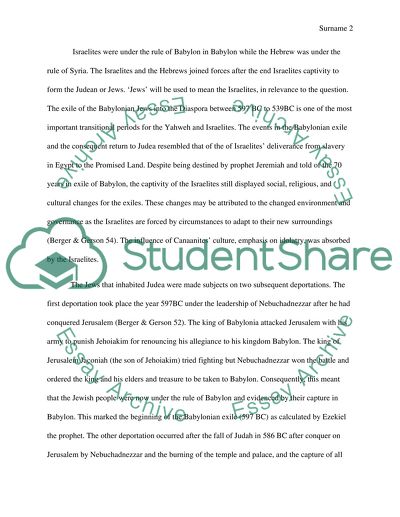Jews in Babylon Term Paper Example | Topics and Well Written Essays - 1250 words. Retrieved from https://studentshare.org/history/1434393-a-moment-of-a-social-change-in-jewish-society
Jews in Babylon Term Paper Example | Topics and Well Written Essays - 1250 Words. https://studentshare.org/history/1434393-a-moment-of-a-social-change-in-jewish-society.


